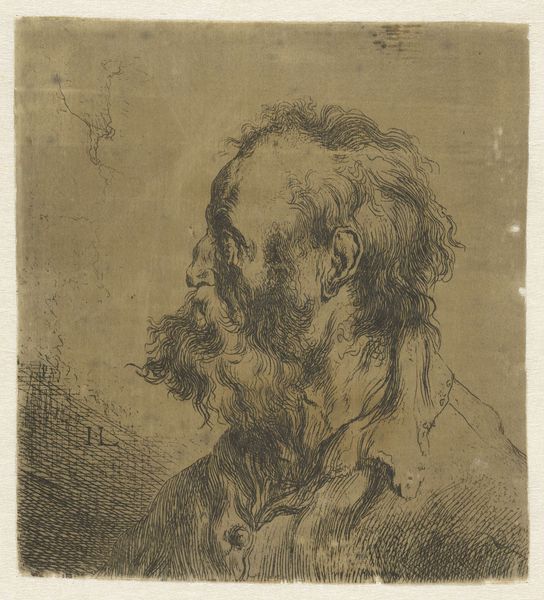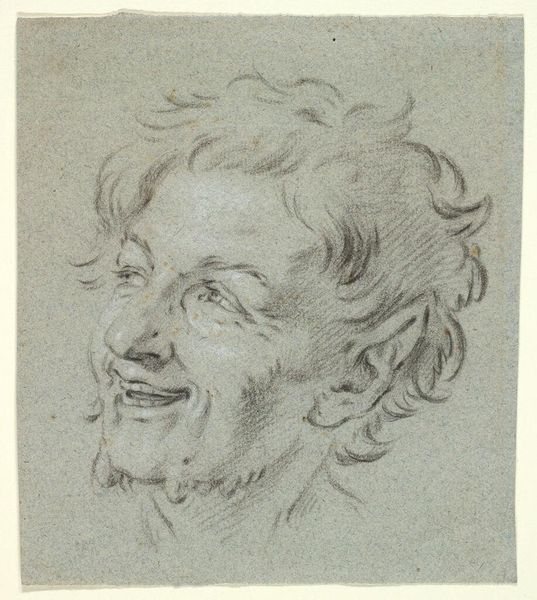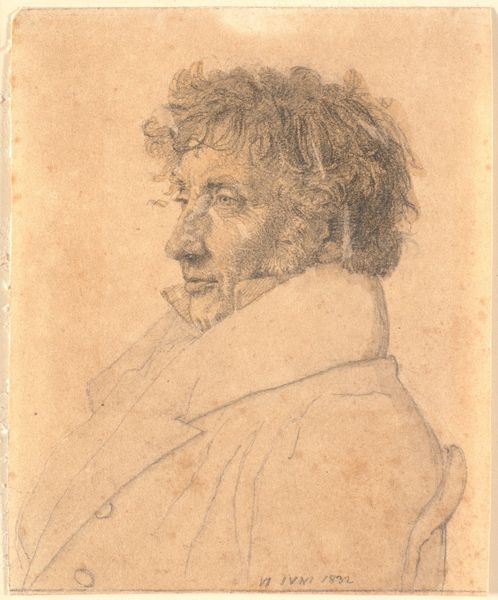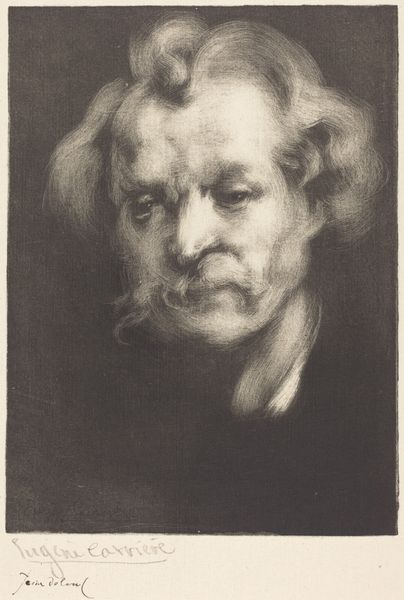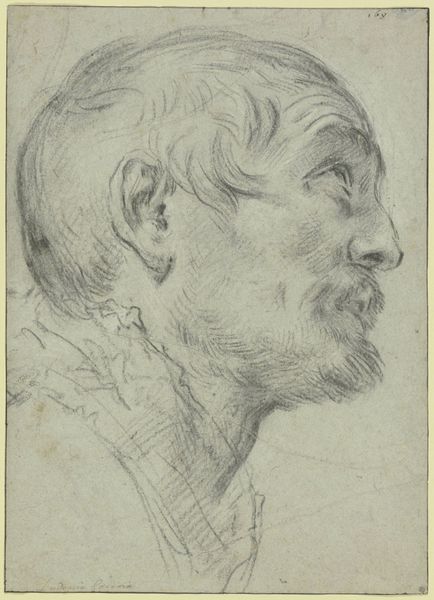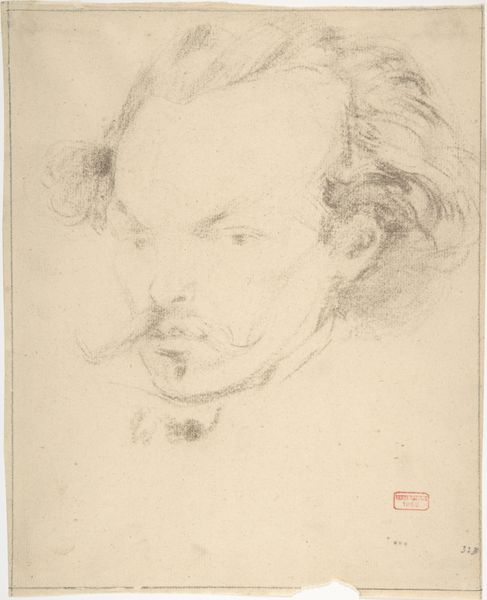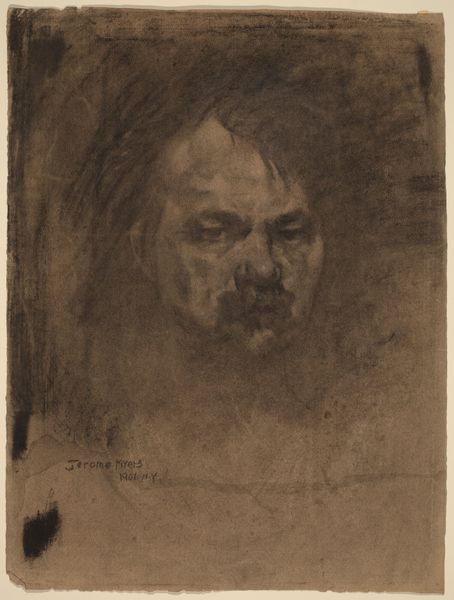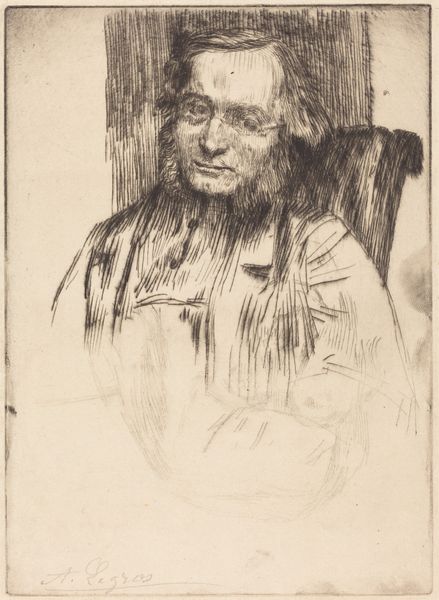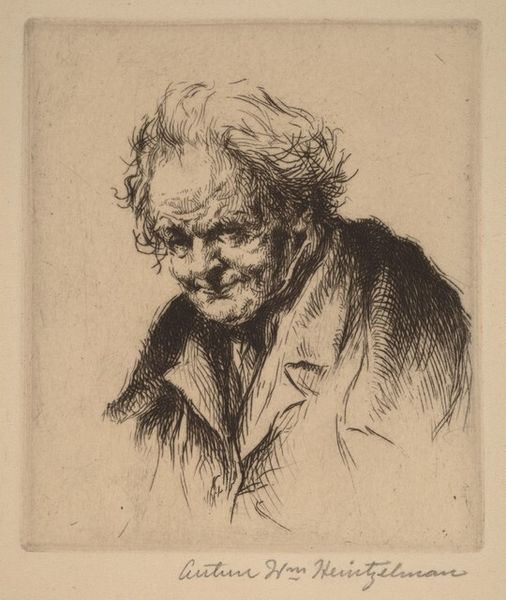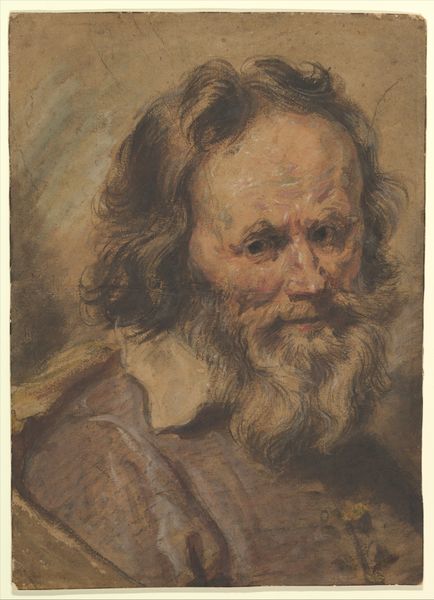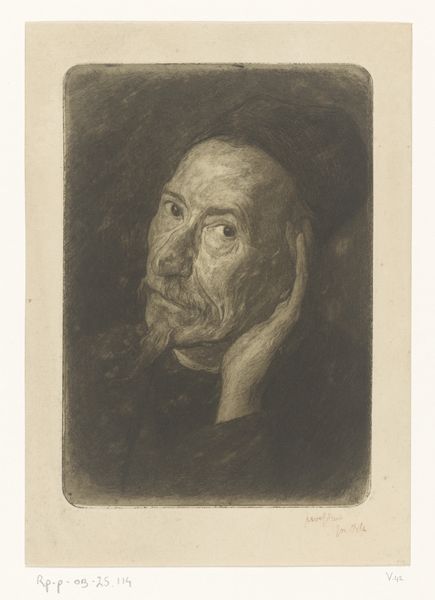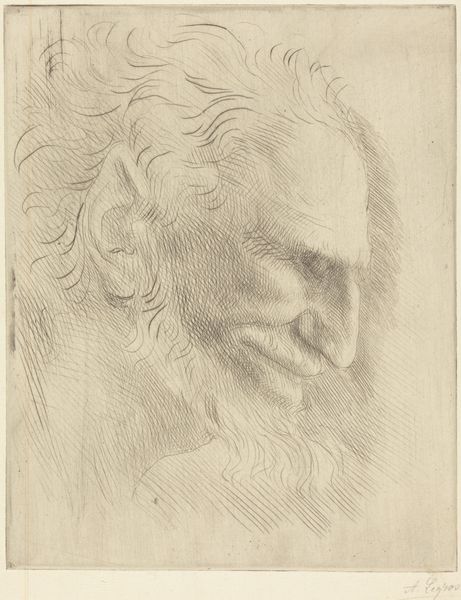
drawing, charcoal
#
portrait
#
drawing
#
self-portrait
#
figuration
#
ashcan-school
#
charcoal
#
realism
Dimensions: overall (approximate): 36.7 x 29.6 cm (14 7/16 x 11 5/8 in.)
Copyright: National Gallery of Art: CC0 1.0
Curator: Well, hello! Today, we are considering Jerome Myers's "Self-Portrait," created around 1922. What is your first reaction? Editor: The texture grabs me immediately—the way charcoal dusts across the paper. You can almost feel the soft give of it under the artist's hand. And this man's knowing smirk – it exudes lived experience! Curator: That’s fascinating. His self-presentation here really chimes with the spirit of the Ashcan School. Their artists turned towards the everyday lives of working-class Americans in their work. They tried to represent a side of modern life other artists overlooked. The symbolic significance is quite strong in this regard, you know? Editor: Exactly! Look how economically the forms are rendered; such an immediacy suggests the cheapness of materials, the availability of art-making tools. Myers wasn't invested in the slick perfection prized by the Academy, which underscores that spirit of social realism of his movement. Curator: Right, the materials serve his social commitment! But I think, for Myers, the gaze goes both ways. In choosing himself as subject—this grizzled, experienced man—he seems to enshrine the quotidian as worthy of contemplation, transforming something ordinary into an icon. Editor: And there's a strong tradition for artists using self-portraiture to present the role of an artist as well. Myers wants you to see the work etched on his face— the literal labor that constitutes a life of creativity. A really wonderful detail! The smudges also remind you the ephemerality of a medium like charcoal... nothing lasts forever. Curator: Certainly. Considering his Jewish heritage, his self-portraits are attempts to connect to this lineage. This representation suggests a determined and, shall we say, "worldly" character. One can speculate the social and cultural values inscribed onto his face. Editor: It’s compelling to see the act of drawing itself laid bare like this: material, technique, social context...all intertwining, really! I like how this approach asks how and why an image comes into being. Curator: This encounter allows me to rethink about personal narratives within broader artistic movements, a truly enriching piece indeed. Editor: Indeed! By foregrounding those processes of artistic creation and class identity, it offers a potent glimpse into the era and the man behind the artwork!
Comments
No comments
Be the first to comment and join the conversation on the ultimate creative platform.
